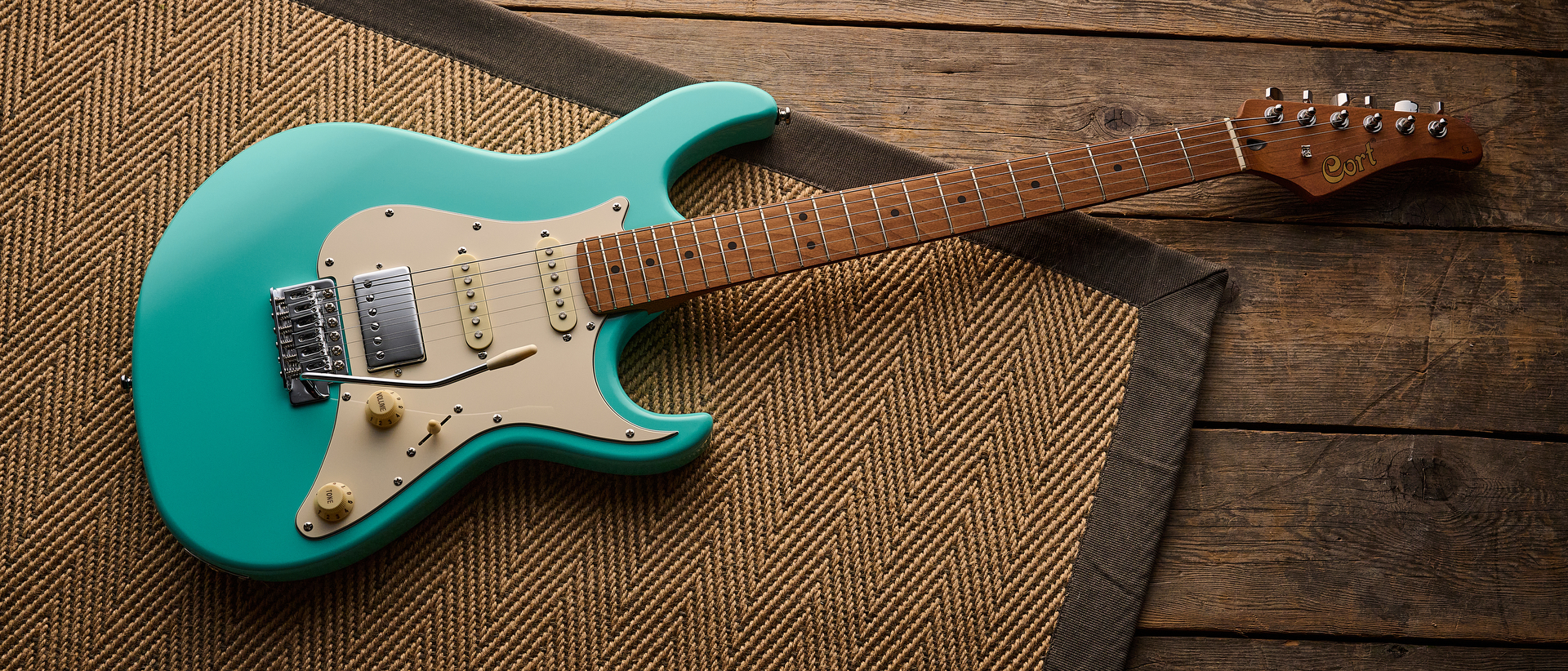Jazz Guitar Corner: Spread Triads for Guitar, Part 3 — Two-Up Shapes

In this, the third — and final — part of our series exploring spread triad voicings for guitar, we will be looking at raising two notes in each inversion of major, minor, diminished and augmented triads on the fretboard.
By doing so, you will be able to expand your triad vocabulary beyond the commonly used shapes, which will allow you to play all your favorite tunes but with new and fresh voicings for the standard triads you normally play.
Since this is the last in a series of columns on this subject, it would be beneficial to explore the other shapes in this series in order to get them under your fingers and see/hear how they relate to the shapes presented in this lesson.
You can see the first two articles of this series by visiting the links below:
• Spread Triads for Guitar, Part 1
• Spread Triads for Guitar, Part 2
What Are Two-Up Spread Triads?
All the latest guitar news, interviews, lessons, reviews, deals and more, direct to your inbox!
These spread triads, in a similar fashion to the ones we've looked at in the previous two articles, take the closed-position triad and then raise the second and third notes by one octave each.
You can see this in the first example below, where C-E-G notes of the C triad are still in the proper order, but are now both one octave higher than you would expect.
By doing so, you are keeping all of the correct notes of the C chord but are playing it in a new and fresh arrangement, which can help spice things up when playing triads in songs and improvisations.
Two-Up Major Spread Triads
To begin, let’s take a look at the major version of these spread triads, where the second and third note of each inversion have been raised by one octave. Though there is a giant spread between the first and second notes of each shape, because of the way the guitar is tuned, there are not really any difficult stretches to hinder you as you learn these spread triads on the neck.
Check out these shapes over a C chord first, then bring them to 12 keys around the neck, and then to some of your favorite tunes, in order to see how these spread major-triad shapes will sound when taken to a musical situation.

Two-Up Minor Spread Triads
Here are the minor versions of the spread-triad shape, where the second and third note of each inversion have been raised by one octave each.
To build these shapes, we simply take all of the major triads from the previous section, and then lowered the 3rd in each shape by one fret. Again, there are some big leaps on the staff between the first and second notes, but there are no tough stretches on the fretboard.
For this reason, having a large leap in sound but not in distance on the fretboard, these are probably the easiest of the three spread triad shapes that we’ve covered in this series to get under your fingers, making them a good place to start when looking at spread triads in the practice room.

Two-Up Diminished Spread Triads
The next shapes we’ll look at are the diminished versions of each spread triad, where the second and third notes of each inversion have been raised by one octave each. To build these diminished shapes, you take the minor triads from the previous section and lower the 5th of each shape by one fret, producing each of the six diminished chords you see below.
This method of learning triads, building off of previously learned shapes and altering one note to form a new series of triads can not only help you learn new shapes quickly, but you will be able to see how each different triad is related to the rest of the chords in the triad family.

Two-Up Augmented Spread Triads
The final shapes in this lesson, augmented triads, are built by taking the major triads from the first section and raising the 5th of each shape by one fret. Then again, the second and third note of each inversion have been raised by an octave each to produce the fingerings below.
Now that you have all four triads under your fingers, major-minor-diminished-augmented, try playing each of these triads and their inversions back to back in one key. This will allow you to visualize and hear how each triad quality is related to one another both on the fretboard and from a listening perspective.

Though these triads are the most spread out on paper of the three we have covered in this series, they are some of the easiest of the bunch to get under your fingers and into your tunes. Try these shapes out in the practice room this week. They are a great way to breath new life into your triad and three-note chord work in the woodshed.
Do you have any questions or comments about this lesson? Post your thoughts in the COMMENTS section below.
Matt Warnock is the owner of mattwarnockguitar.com, a free website that provides hundreds of lessons and resources designed to help guitarists of all experience levels meet their practice and performance goals. Matt lives in the UK, where he is a lecturer in Popular Music Performance at the University of Chester and an examiner for the London College of Music (Registry of Guitar Tutors).
Matt Warnock is the owner of mattwarnockguitar.com, a free website that provides hundreds of lessons and resources designed to help guitarists of all experience levels meet their practice and performance goals. Matt lives in the UK, where he teaches Skype guitar students all over the world, and is an examiner for the London College of Music (Registry of Guitar Tutors).
